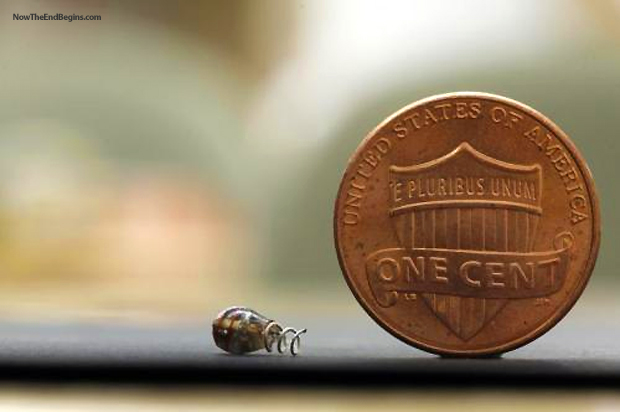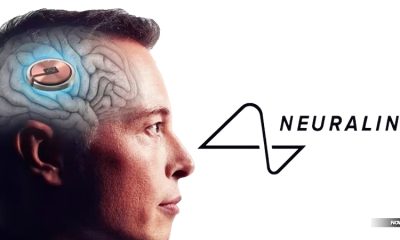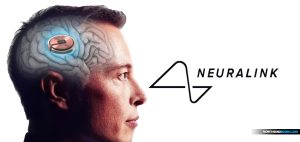Electroceuticals
Engineers At Stanford Invent Wireless Power Transfer For Human Implantable RFID Chip
A method of wirelessly transferring power to devices embedded deep in the body could lead to a new era of ‘electronic medicine’, say researchers. The technology developed in California could eliminate the bulky batteries and clumsy recharging systems that hinder wider use of medical implants.

Midfield Wireless Transfer paves the way for permanent implantable RFID monitoring and tracking devices
“And he causeth all, both small and great, rich and poor, free and bond, to receive a mark in their right hand, or in their foreheads: And that no man might buy or sell, save he that had the mark, or the name of the beast, or the number of his name.” Revelation 13:16,17
Every, single invention that has taken away larger and larger pieces of our privacy and freedoms have always ridden on to the scene on the back of a legitimate need. Needing to find a way to reduce the number of fatalities by drunk drivers led to a nationwide network of hyper-invasive “red light” cameras at nearly every intersection in America, recording every move you make. Likewise, the need to find ways to help heart and brain patients has now led to a whole new category of medicine called electroceuticals. It will be through this opening that the government-mandated, implantable RFID chip National ID System will arrive.
One of the main things that has been holding up the widespread use of the human implantable RFID chip was the question of how to keep it powered. With this latest invention, that problem has now been solved to the point that the implantable chip can now be utilized and integrated into our daily lives alongside of all the other technology we have become addicted to.
Stanford University – A method of wirelessly transferring power to devices embedded deep in the body could lead to a new era of ‘electronic medicine’, say researchers. The technology developed in California could eliminate the bulky batteries and clumsy recharging systems that hinder wider use of medical implants.

A batteryless electrostimulator next to a US penny for size comparison. The new powering method allows the device to be wirelessly powered deep inside the body, in locations such as the heart or brain. Credit: Austin Yee.
After successfully powering a tiny heart pacemaker in a rabbit, the system is now being prepared for human trials. The hope is that it will assist the development of ultra-small devices that can be used instead of drugs to treat disease or control pain.
Known as ‘electroceuticals’, these device may be more effective than drugs for some disorders, such as those affecting specific regions of the brain.
The pacemaker device created by the scientists was smaller than a grain of rice and could be powered or recharged wirelessly simply by holding a credit card-sized power source outside the body.
‘We need to make these devices as small as possible to more easily implant them deep in the body and create new ways to treat illness and alleviate pain,’ said electrical engineer Dr Ada Poon, from Stanford University, who invented the technology.
The wireless power system involves a new way to control electromagnetic waves inside the body. Dr Poon designed a power source that generated a special type of wave which changed in character when it moved from air to skin.
Contact with the body allowed it to propagate, like sound waves through a railway track. Tests showed that the system fell well below the safety limits for human exposure to electromagnetic radiation. Details of the research appear in the journal Proceedings of the National Academy of Sciences.
Commenting on the development, neurobiologist Professor William Newsome, director of the Stanford Neurosciences Institute, said: ‘To make electroceuticals practical, devices must be miniaturised, and ways must be found to power them wirelessly, deep in the brain, many centimetres from the surface.
‘The Poon lab has solved a significant piece of the puzzle for safely powering implantable microdevices, paving the way for new innovation in this field.’ source – Daily Mail UK

-

 George Soros7 years ago
George Soros7 years agoProof Of George Soros Nazi Past Finally Comes To Light With Discovery Of Forgotten Interview
-

 Election 20167 years ago
Election 20167 years agoDEAD POOL DIVA: Huma Abedin Kept Those Hillary Emails That The FBI Found In A Folder Marked ‘Life Insurance’
-

 Election 20167 years ago
Election 20167 years agoCrooked Hillary Campaign Used A Green Screen At Today’s Low Turnout Rally In Coconut Creek FL
-

 George Soros7 years ago
George Soros7 years agoSORE LOSER: George Soros Declares War On America As Violent MoveOn.Org Protests Fill The Streets
-

 Donald Trump7 years ago
Donald Trump7 years agoDonald Trump Will Be 70 Years, 7 Months And 7 Days Old On First Full Day In Office As President
-

 Headline News7 years ago
Headline News7 years agoIf Hillary Is Not Guilty, Then Why Are Her Supporters Asking Obama To Pardon Her? Hmm…
-

 Election 20167 years ago
Election 20167 years agoWikiLeaks Shows George Soros Controlling Vote With 16 States Using SmartMatic Voting Machines
-

 End Times7 years ago
End Times7 years agoFalse Teacher Beth Moore Endorses The Late Term Partial-Birth Abortion Candidate Crooked Hillary









































































